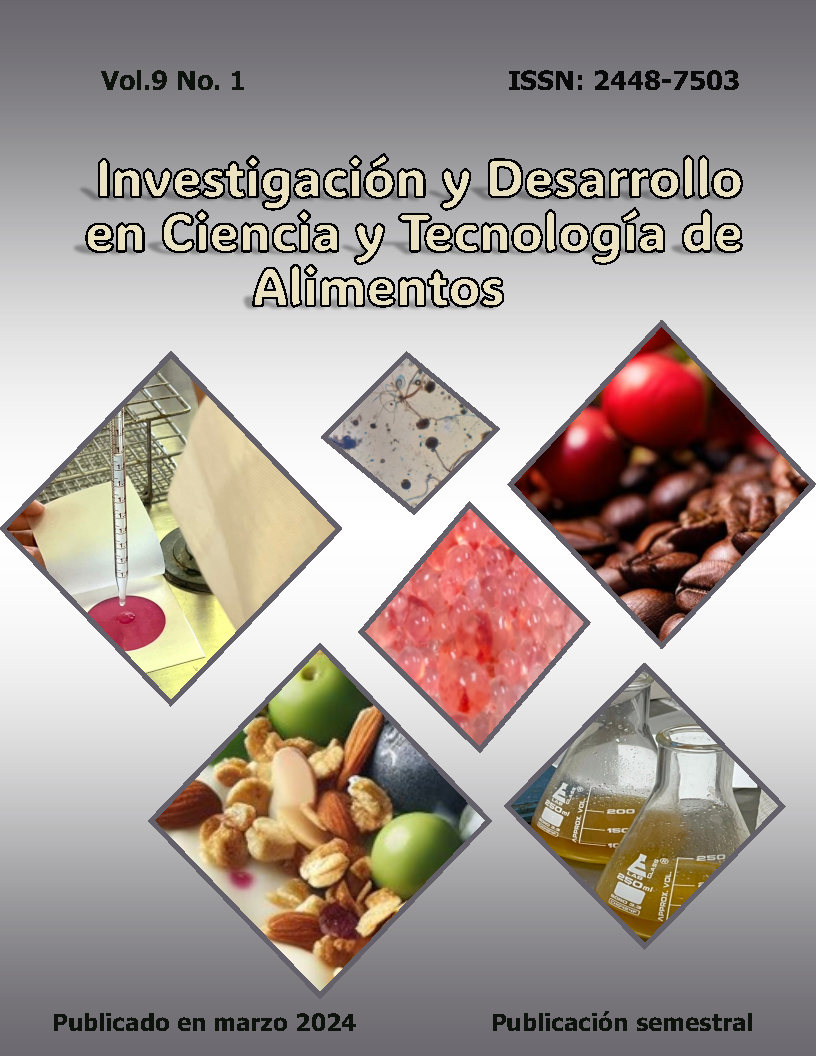Processing of cardona tuna for making jam
DOI:
https://doi.org/10.29105/idcyta.v9i1.123Keywords:
Tuna, tuna jam, cardona tuna, reduced in sugars, healthyAbstract
A cardona tuna jam was made, which is one of the native ones of the Potosí highlands and to which a significant amount of nutritional values are attributed. The proposal was called Deli Tuna. The blood sugar levels of the consumers were measured by comparing them before and after consumption with Deli Tuna and with 2 other jams that exist on the market, which were named “V” jam and “L” jam. The control group was considered those who consumed the natural prickly pear fruit.
Satisfactory results were obtained according to the results since the blood sugar levels of the consumers selected in the study did not show a considerable increase with Deli Tuna, with the “L” jam, increases in blood glucose levels were noted. blood and all increases were greater than those of Deli Tuna. In the case of jam “V” it was the one that presented a greater increase in blood sugar levels, which can be attributed to the type of honey used in the production process, which is why Deli Tuna demonstrated the best results. It is important not to consume in excess and to continue with the bromatological and characterization studies to have more conclusive results.
Downloads
References
Bugarin-Cardiel, E., Ramírez-Vaca, P., Martínez-García, J. J., & Candelas-Cadillo, M. G. (2016). Textura, nivel de agrado y propiedades fisicoquímicas de tuna blanca (Opuntia ficus-indica) en rebanadas sometidas a criocongelación para su conservación. Investigación y Desarrollo en Ciencia y Tecnología de Alimentos, 1(2), 327-333.
Cota-Sánchez, J. H. (2016). Nutritional Composition of the Prickly Pear (Opuntia ficus-indica) Fruit. En M. S. J. Simmonds & V. R. Preedy (Eds.), Nutritional Composition of Fruit Cultivars (pp. 691-712). Academic Press. https://doi.org/10.1016/B978-0-12-408117-8.00028-3 DOI: https://doi.org/10.1016/B978-0-12-408117-8.00028-3
Esquivel Reyes, N. V. (2017). Análisis de textura en frutas. Universidad Nacional de Trujillo.
Fuchs, L. (2020, junio 7). Mermelada, confitura, jalea y compota no son lo mismo: En qué se diferencian y cuáles tienen más fruta y menos azúcar. Directo al Paladar. https://www.directoalpaladar.com/ingredientes-y-alimentos/mermelada-confitura-jalea-compota-no-que-se-diferencian-cuales-tienen-fruta-azucar
Gengatharan, A., Dykes, G. A., & Choo, W. S. (2015). Betalains: Natural plant pigments with potential application in functional foods. LWT - Food Science and Technology, 64(2), 645-649. https://doi.org/10.1016/j.lwt.2015.06.052 DOI: https://doi.org/10.1016/j.lwt.2015.06.052
Gobierno de México. (2017). La tuna, una fruta muy mexicana. Fideicomiso de Riesgo Compartido. http://www.gob.mx/firco/articulos/la-tuna-una-fruta-muy-mexicana?idiom=es
Juárez, C. (2020, mayo 7). Azúcar de tuna como alimento funcional. The Food Tech - Medio de noticias líder en la Industria de Alimentos y Bebidas. https://thefoodtech.com/nutricion-y-salud/azucar-de-tuna-como-alimento-funcional/
Lazcano-Hernández, C. Y., Hernández-Hernández, A. A., García-Curiel, L., Pérez-Escalante, E., Contreras-López, E., & Pérez-Flores, J. G. (2023). Extracción de compuestos bioactivos a partir de los subproductos de la tuna (Opuntia ficus-indica spp.): Tendencias y aplicaciones recientes en alimentos. Investigación y Desarrollo en Ciencia y Tecnología de Alimentos, 8(1), 785-794. https://doi.org/10.29105/idcyta.v8i1.101 DOI: https://doi.org/10.29105/idcyta.v8i1.101
Medico Beviá, A. M. (2021). Determinación de metales y de la capacidad antioxidante en Tuna (Opuntia Ficus-Indica Mill): Microbiota y Salud [Universidad Miguel Hernández de Elche]. http://dspace.umh.es/handle/11000/25895
OMS. (2023). Diabetes. https://www.who.int/es/news-room/fact-sheets/detail/diabetes
Orozco, M. L., Flores, J. M., Soto, G. M., & Ramírez, J. L. M. (2011). Formulación de una mermelada a partir de pulpa y cáscara de tunas (Opuntia spp.) elaborada a nivel planta piloto. Acta Universitaria, 21(2), Article 2. https://doi.org/10.15174/au.2011.33 DOI: https://doi.org/10.15174/au.2011.33
Ramírez-Ramos, M., García-Mateos, M. del R., Corrales-García, J., Ybarra-Moncada, C., & Castillo-González, A. M. (2015). Compuestos antioxidantes en variedades pigmentadas de tuna (Opuntia sp.). Revista fitotecnia mexicana, 38(4), 349-357. DOI: https://doi.org/10.35196/rfm.2015.4.349
Sumaya-Martínez, M. T., Diéguez, T. S., García, E. A., & Sampedro, J. G. (2010). Innovación de productos de alto valor agregado a partir de la tuna mexicana. 27(15), 435-441.
Tuna—Agricultura Sostenible. (2021). https://agriculturasostenible.mx/2021/12/23/tuna/
Downloads
Published
How to Cite
Issue
Section
License
Copyright (c) 2024 Alondra del Carmen Aguilar Hernández, Yahir Bárcenas Anguiano, Karen Cuevas Galicia, Maria Lisseth Flores Cedillo

This work is licensed under a Creative Commons Attribution 4.0 International License.
Los autores/as que publiquen en esta revista aceptan las siguientes condiciones:
a. Los autores/as conservarán sus derechos de autor y garantizarán a la revista el derecho de primera publicación de su obra, el cual estará simultáneamente sujeto a la Licencia Creative Commons Atribución 4.0 Internacional. que permite a terceros compartir la obra siempre que se indique su autor y su primera publicación esta revista.
b. Los autores/as pueden realizar otros acuerdos contractuales independientes y adicionales para la distribución no exclusiva de la versión del artículo publicado en esta revista (p. ej., incluirlo en un repositorio institucional o publicarlo en un libro) siempre que indiquen claramente que el trabajo se publicó por primera vez en esta revista.
c. Se permite y recomienda a los autores/as a publicar su trabajo en Internet (por ejemplo en páginas institucionales o personales) posterior al proceso de revisión y publicación, ya que puede conducir a intercambios productivos y a una mayor y más rápida difusión del trabajo publicado.





